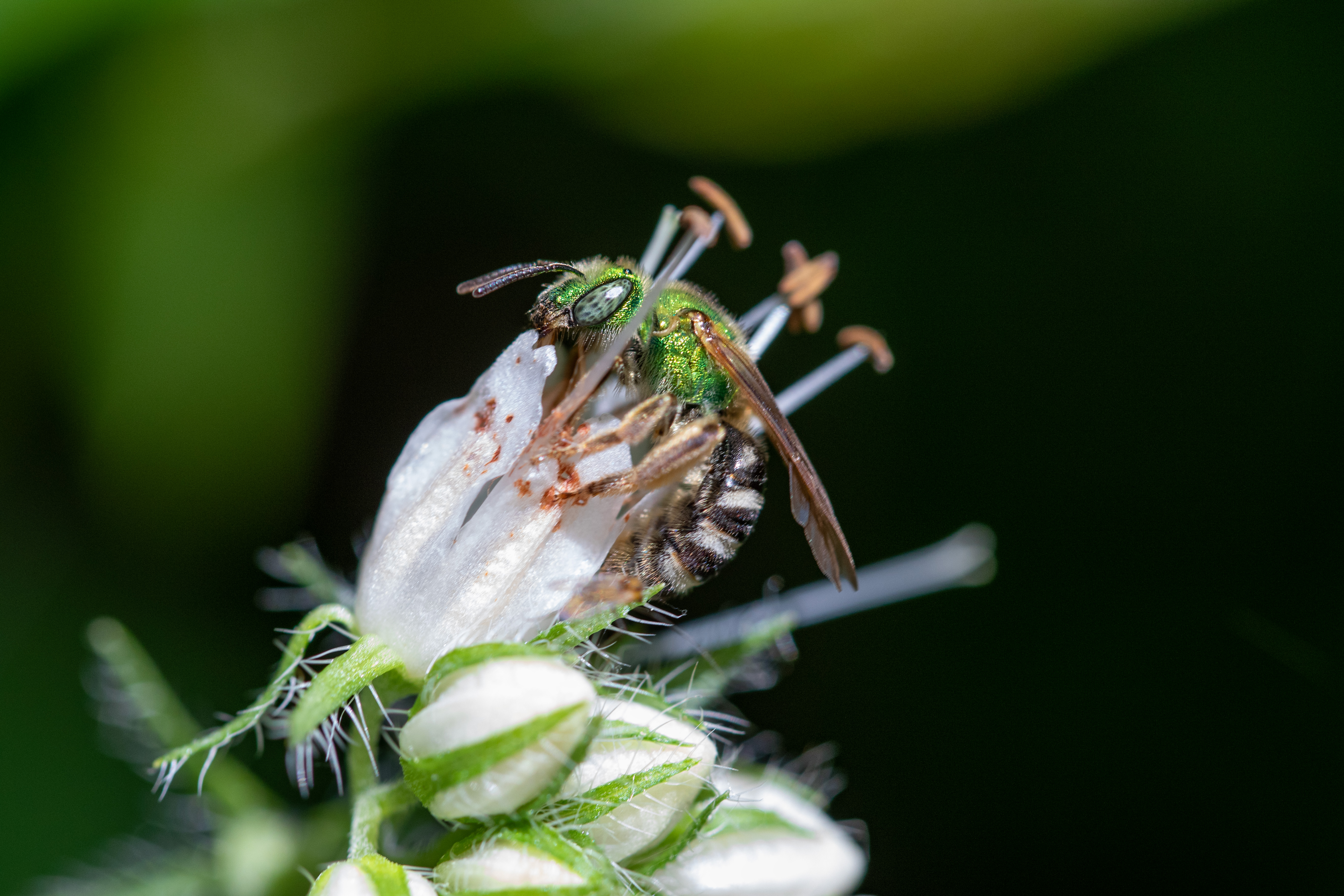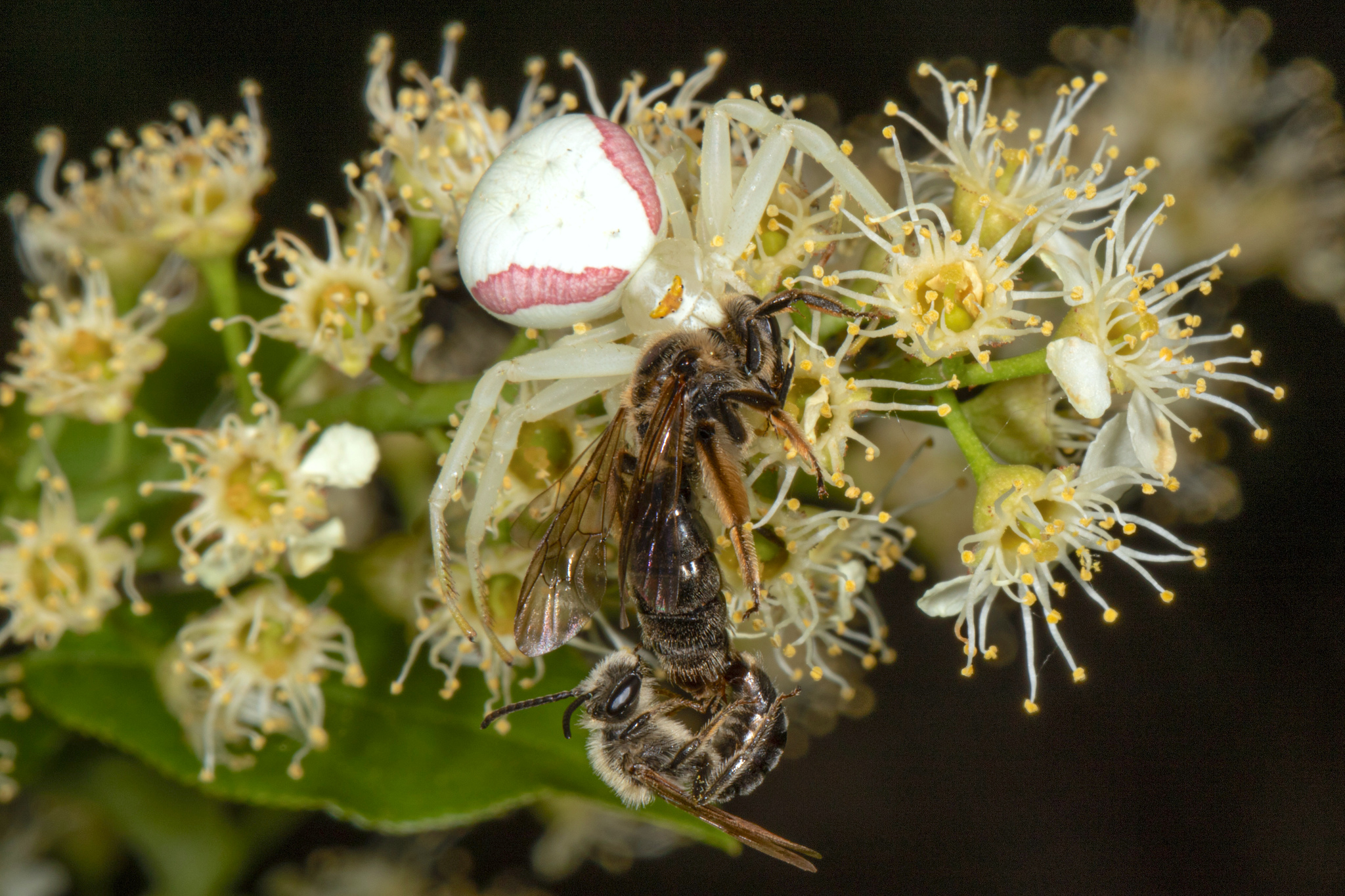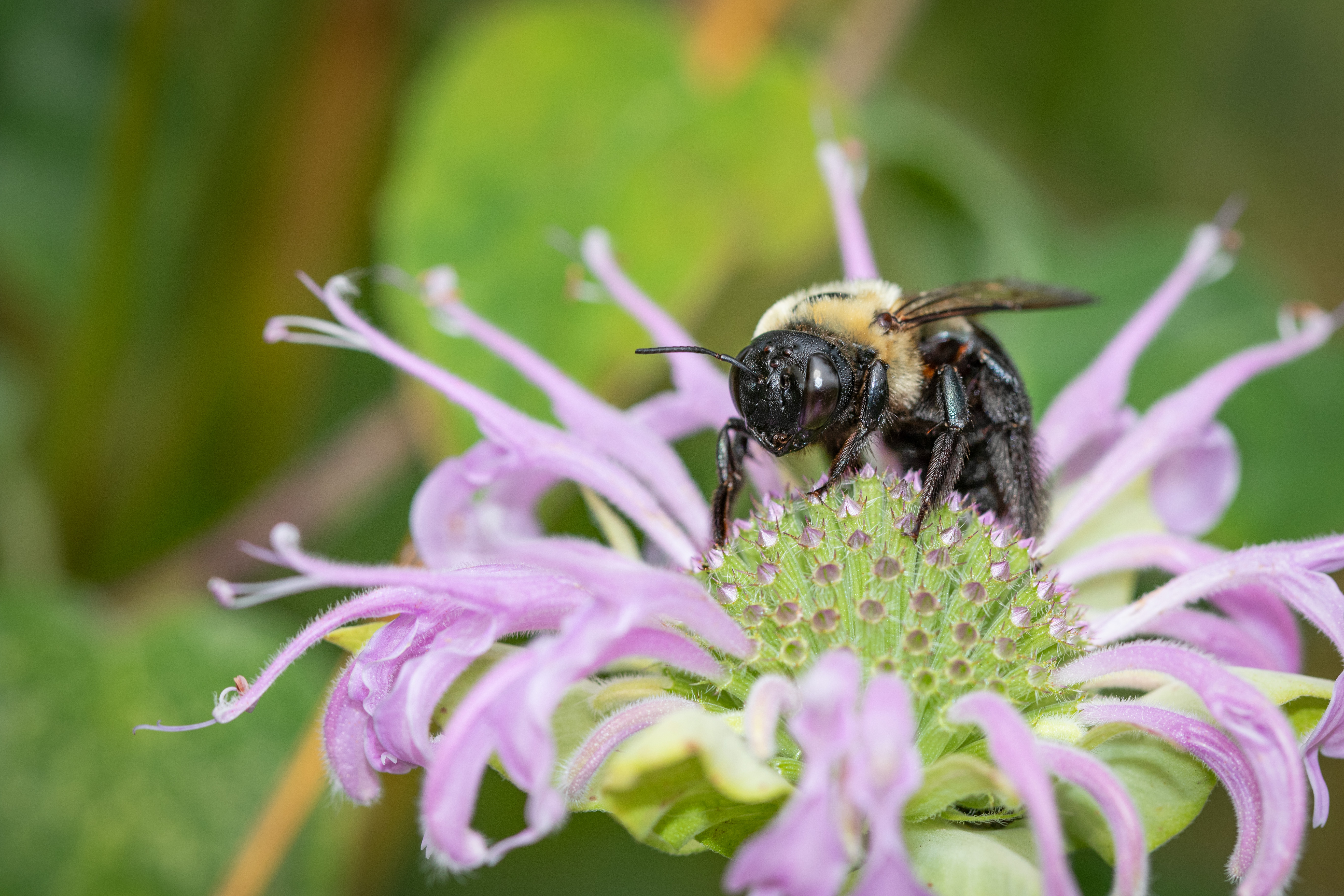At least 55 of Vermont's native, wild bee species need significant conservation action

With over 350 species in Vermont, wild bees are a diverse and ecologically important insect group. As one of the most important groups of pollinators, bees provide essential ecological and agricultural services. Documented declines of a few species have caused concern about a possible collapse of all bee populations. However, our understanding of the conservation status, threats, and even the natural history of many species is still in its infancy. Over the past decade, thousands of community scientists and professional biologists have helped us to survey wild bees across Vermont, allowing us to assess their conservation status for the first time.
This report addresses current knowledge about the conservation status of wild bees. The domestic Western Honey Bee is important to agriculture and the economy, but can also pose a threat to wild bees. Learn more about The Problem with Honey Bees...


